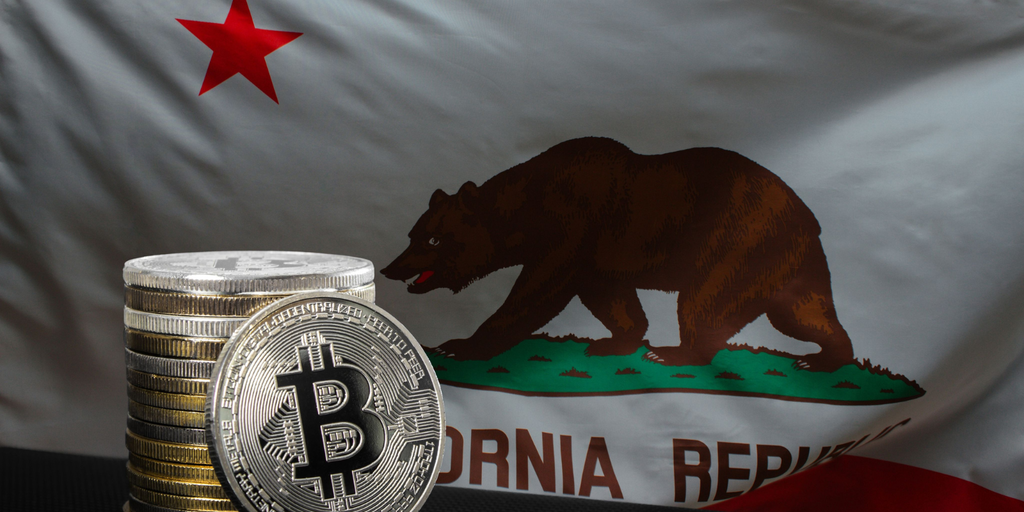
Know what floats my boat? Charts and graphs. Give me a cool chart to dig into and I'm unreasonably happy. Is that weird? I don't think so.
Also: The top 20 AI tools of 2025 - and the #1 thing to remember when you use them
As it turns out, ChatGPT does a great job making charts and tables. And given that this ubiquitous generative AI chatbot can synthesize a ton of information into something chart-worthy, what ChatGPT gives up in pretty presentation it more than makes up for in informational value.
How to use ChatGPT to make charts and tables
There's more to ChatGPT than charting tools. To use the AI tool productively, you need to understand what the various editions of the technology can do.
It should come as no surprise to anybody that AI chatbots' feature sets change almost constantly. As of this update (April 2025), OpenAI has just launched its more in-depth GPT-4.5 model (for paying customers only). The Advanced Data Analysis feature we'll consider here is available to free and paying customers.
Also: 5 reasons I turn to ChatGPT every day - from faster research to replacing Siri
Historically, OpenAI has introduced major new features into its Plus version and then, after a time, rolled them out to free users. As such, it's often challenging on a week-by-week basis to tell you which features exist in the free version vs. the Plus version.
Here's a general guideline. The free version is generally more limited than the Plus version. That limitation means fewer queries per session, less data to analyze, possibly a slightly older LLM version available, longer waiting times for responses, and more. Basically, you're in the cheap seats if you use the free version and get a more premium experience if you pay for the Plus version.
I now pay for the Plus version because I often got cut off from asking questions before I was done with whatever I was working on. That (mostly) doesn't happen anymore now that I pay for the Plus version.
Also: How to use ChatGPT: A beginner's guide to the most popular AI chatbot
For much of this article, we'll use the Advanced Data Analysis now embedded in the free and Plus versions. This tool imports data tables in a wide range of file formats. While the tool doesn't specify a size limit for imported data, it can handle fairly large files but will break if the files exceed an undefined level of complexity.
For now, my advice is to try these things on the free version, and if you need a more responsive experience, upgrade to the Plus version.
Let's start with an example. For the following demonstration, we'll work with the top five cities in terms of population.
List the top five cities in the world by population. Include country.
I asked this question to ChatGPT and here's what I got back:
Turning that data into a table is simple. Just tell ChatGPT you want a table:
Make a table of the top five cities in the world by population. Include country.
Notice that the AI also gave me population data, even though I didn't explicitly ask for a population column.
You can manipulate and customize a table by giving ChatGPT detailed instructions. Again using the free version, we'll add a population count field.
You can specify certain details for the table, like field order and units. Here, I'm moving the country first and compressing the population numbers.
Make a table of the top five cities in the world by population. Include country and a population field. Display the fields in the order of rank, country, city, population. Display population in millions (with one decimal point), so 37,833,000 would display as 37.8M.
Note how I gave the AI an example of how I wanted the numbers to display:
ChatGPT can make line charts, bar charts, histograms, pie charts, scatter plots, heatmaps, box plots, area charts, bubble charts, Gantt charts, Pareto charts, network diagrams, Sankey diagrams, choropleth maps, radar charts, word clouds, treemaps, and 3D charts.
Also: The most popular AI tools of 2025 (and what that even means)
Some chart styles look better than others. Also, some charts need Python to work, or ChatGPT will send you to Python or Excel with instructions on how to set up the chart. But the bottom line is that if you want a chart, you can probably get ChatGPT to help you make it.
In this example, we're going to make a simple bar chart:
Make a bar chart of the top five cities in the world by population
One of Advanced Data Analytics' superpowers is the ability to upload a dataset. For our example, I downloaded the Popular Baby Names dataset from Data.gov. This is a comma-separated file of New York City baby names from 2011-2014. Even though it's a decade out of date, it's fun to play with.
The dataset I chose for this article is readily available from a government site, so you can replicate this experiment on your own. There are a ton of great datasets available on Data.gov, but I found that many are far too large for ChatGPT to use.
Also: Forget the new Siri: Here's the advanced AI I use on my iPhone instead
Once I downloaded our dataset, I realized it also included information on ethnicity, meaning we could run several charts from the same dataset.
Click the little upload button and tell the AI the data file you want to import:
I asked it to show me the first five lines of the file so I'd know more about the file's format.
I was curious about how the dataset distributed gender names. Here's my first prompt:
Create a pie chart showing gender as a percentage of the overall dataset
And here's the result. Note the color choices for each pie wedge. That was ChatGPT's choice:
You can instruct Advanced Data Analytics to use different colors. I was careful to choose colors that did not reinforce gender stereotypes or redefine common gender-related colors:
Create a pie chart showing gender as a percentage of the overall dataset. Use light green for male and medium yellow for female.
Look at ChatGPT's response carefully. Here's where we see inaccuracies in its response. I asked for the male wedge to be green and the female wedge to be yellow. In the chart, the AI reversed those colors, but in the descriptive text, I was right. Don't be afraid to correct the AI:
The colors of the chart don't match the text. Please do it again.
As we saw earlier, the data collected includes ethnicity. Here's how to see the distribution of the various ethnicities in New York recorded in the early 2010s:
Show the distribution of ethnicity in the dataset using a pie chart. Use only light colors.
And here's the result. Notice anything?
Apparently, New York didn't properly normalize its data. It used "WHITE NON HISPANIC" and "WHITE NON HISP" together, "BLACK NON HISPANIC" and "BLACK NON HISP" together, and "ASIAN AND PACIFIC ISLANDER" and "ASIAN AND PACI" together. This approach resulted in inaccurate representations of the data.
One benefit of ChatGPT is it remembers instructions throughout a session. So, I was able to give it this instruction:
For all the following requests, group "WHITE NON HISPANIC" and "WHITE NON HISP" together. Group "BLACK NON HISPANIC" and "BLACK NON HISP" together. Group "ASIAN AND PACIFIC ISLANDER" and "ASIAN AND PACI". Use the longer of the two ethnicity names when displaying ethnicity.
And the AI replied:
Let's try the chart again, using the same prompt.
Show the distribution of ethnicity in the dataset using a pie chart. Use only light colors.
That's better:
You need to be diligent when looking at results.
Also: ChatGPT's subscribers and revenue soar in 2025 - here's why
For example, in a request for top baby names, the AI separated "Madison" and "MADISON" as two different names:
For all the following requests, baby names should be case insensitive.
Let's wrap up with a complex chart from one prompt. Here's our prompt:
For each ethnicity, present two pie charts side-by-side, one for each gender. Each pie chart should list the top five baby names for that gender and that ethnicity. Use only light colors. Do not title each chart. Remove the phrase "Matplotlib Chart" from each chart.
The AI gave me four charts (like the example below), one for each ethnicity it was tracking. Note the phrase "Matplotlib Chart" at the top of the chart. As you can see, I tried very hard to get ChatGPT to remove it and other wacky titles it chose to use from the charts, but with no success. Sometimes, you need to give up and use something like Photoshop to edit out the stupid from an AI response:
Also notice that Sofia and Sophia are very popular, but are shown as two different names. However, that kind of result is what makes charts so fascinating.
Is the data uploaded to ChatGPT for charting kept private or is there a risk of data exposure?
Assume that there's always a privacy risk. I asked this question to ChatGPT and this is what it told me:
Data privacy is a priority for ChatGPT. Uploaded data is used solely for the purpose of the user's current session and is not stored long-term or used for any other purposes. However, for highly sensitive data, users should always exercise caution and consider using the Enterprise version of ChatGPT, which offers enhanced data confidentiality.
My recommendation: Don't trust ChatGPT or any generative AI tool. The Enterprise version is supposed to have more privacy controls, but I recommend you only upload data that you won't mind finding its way to public visibility.
Can ChatGPT's Advanced Data Analysis handle real-time data or is it more suited for static datasets?
It's possible to use real-time data, but there are some practical limitations. First, the Plus account will throttle the number of requests you can make in a given period of time. Second, you have to upload each file individually. There is the possibility you could use a licensed ChatGPT API to do real-time analytics. But for the chatbot itself, you're looking at parsing data at rest.
You can follow my day-to-day project updates on social media. Be sure to subscribe to my weekly update newsletter on Substack, and follow me on Twitter at @DavidGewirtz, on Facebook at Facebook.com/DavidGewirtz, on Instagram at Instagram.com/DavidGewirtz, and on YouTube at YouTube.com/DavidGewirtzTV.










 English (US) ·
English (US) ·